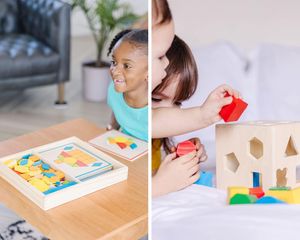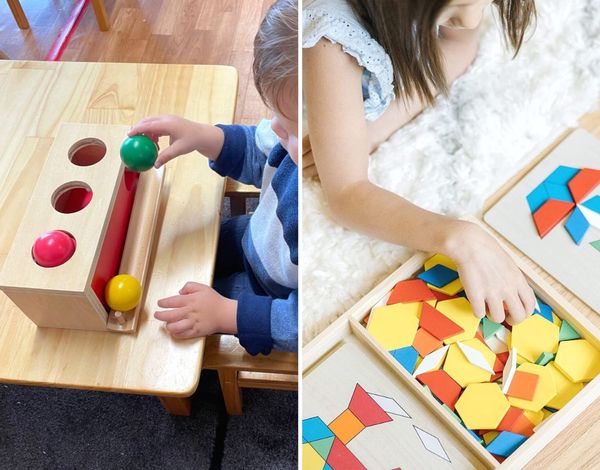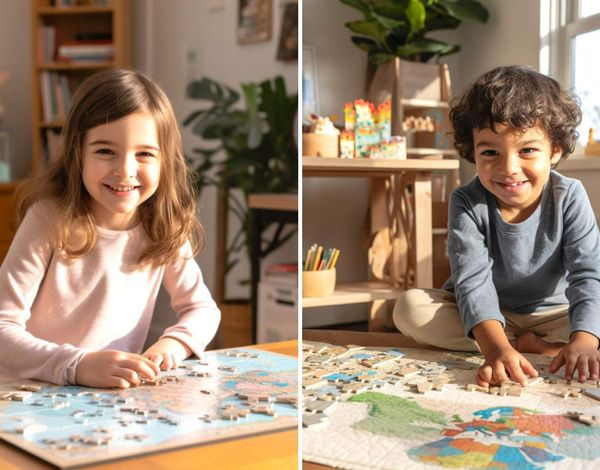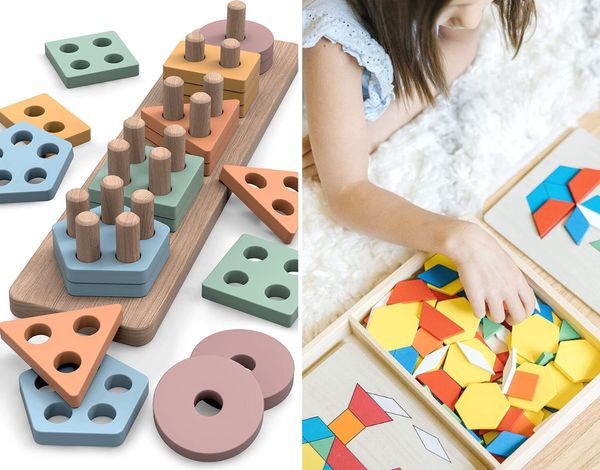lright fellow parents, buckle up! Today we're embarking on a fantastic voyage into the thrilling world of Montessori toy rotation. Now, I hear you saying, "Toy rotation? Is that like a magic trick to make my toy closet seem bigger?" Oh, how I wish! But while it doesn't involve magic, Montessori toy rotation does indeed conjure up some wondrous benefits for our little ones (and yes, your toy closet will thank you!).
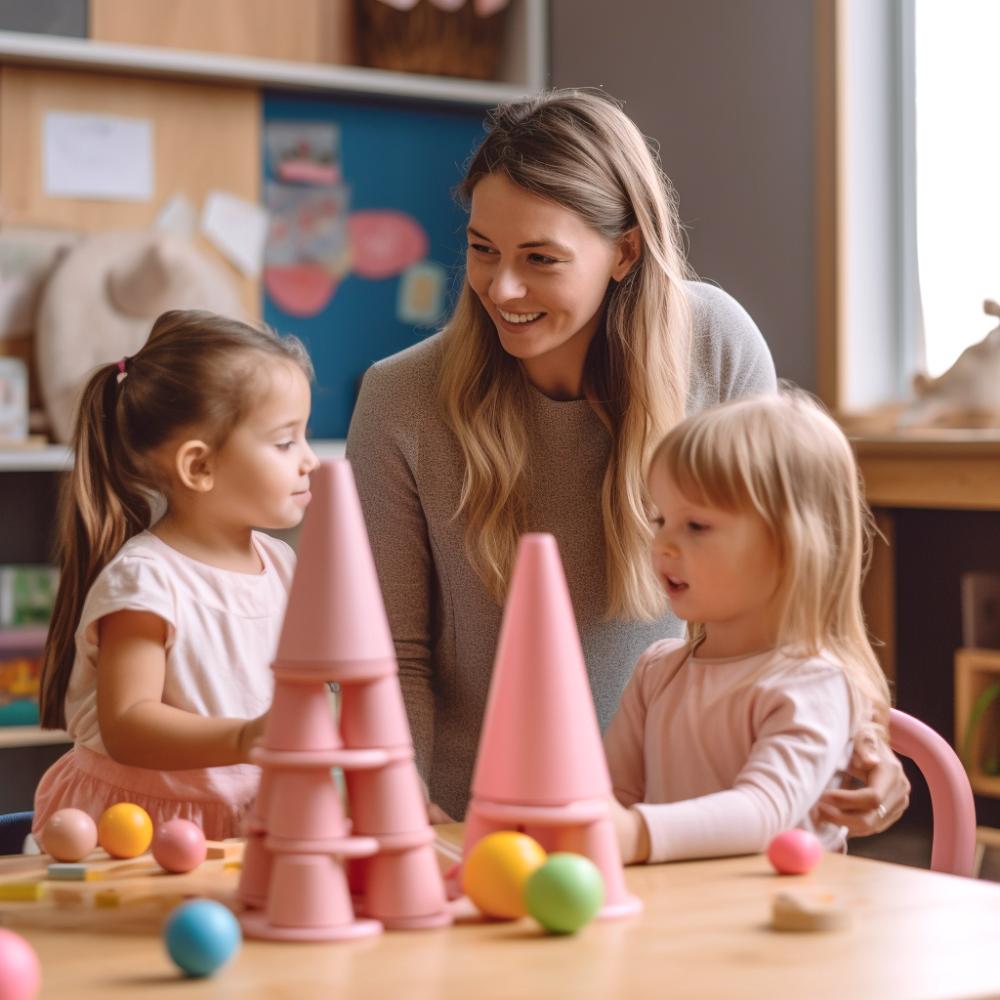
Just imagine - a world where the phrase "do toy cleanups" doesn't cause your toddler to disappear faster than a cookie at snack time. A world where that beautiful Montessori-style toy doesn't get lost in the depths of the toy chest, never to see the light of day again. That's right, my friends. Welcome to the magic of Montessori toy rotation.
In essence, a toy rotation system is a structured method of rotating (or "turning") your child's toys to maintain their interest, develop their skills, and yes, manage the ever-growing toy collection. It's like a revolving door of excitement for your child, a Montessori toy storage solution for you, and a method to keep those well-intentioned, but pesky clutter-creating d-o toys in check!
In our journey today, we'll dive into:
- The curious world of what Montessori toy rotation really is.
- The science behind this fantastic strategy and its impact on your child's development.
- Practical tips on how to rotate toys effectively (with a special spotlight on toy rotation categories) and set up your very own toy rotation system.
- And last, but definitely not least, we'll troubleshoot some common challenges you may encounter in your toy rotation journey.
Why am I your guide on this adventure, you ask? Well, once upon a time, my wife and I found myself at the foot of Mount Toy Closet. Yes, it was as scary as it sounds. We were convinced there was a way to conquer the clutter and transform my child's playtime into an enriching, engaging experience.
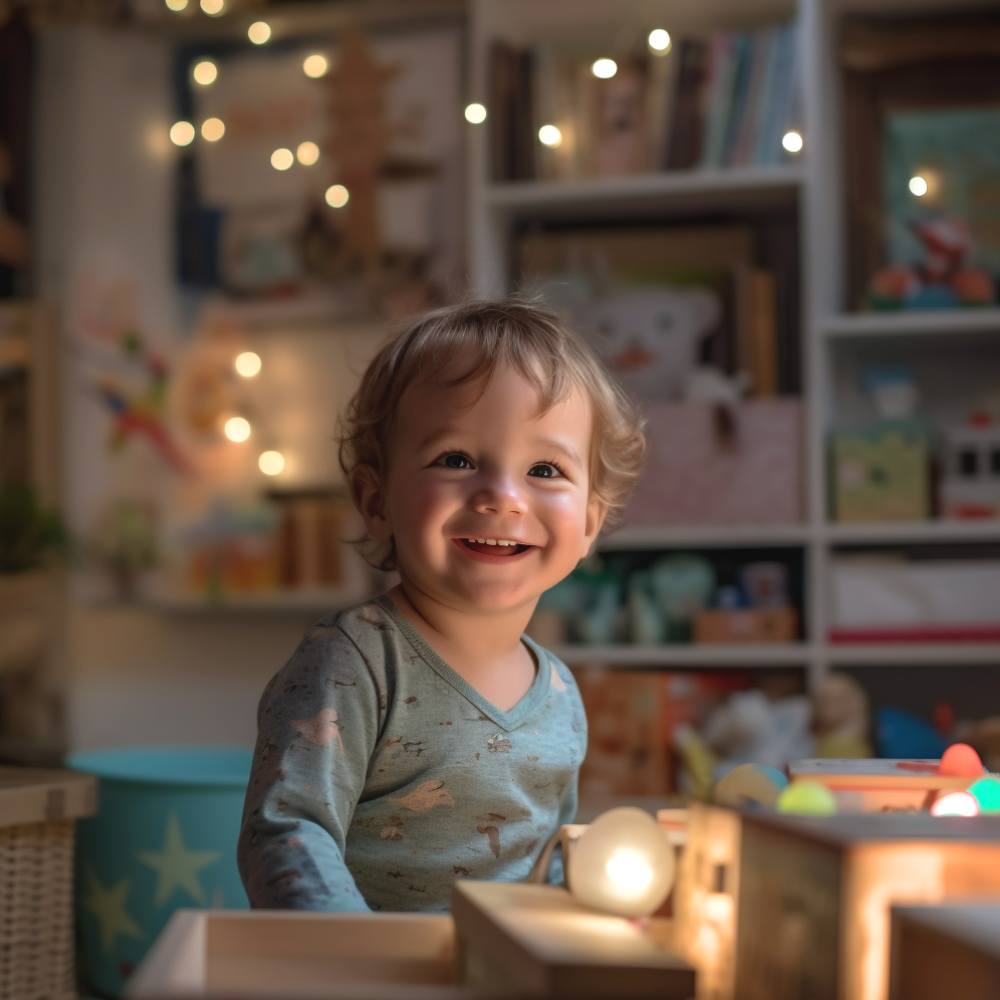
I started researching through Google and today's version of an encyclopedia (Instagram and TikTok), and it led me to the magical realm of Montessori and its philosophy of self-directed learning, hands-on exploration, and practical life skills. And let me tell you, it has been an amazing, though at times hilariously messy, ride! I'm here to share those insights and experiences with you, so you too can witness the benefits of Montessori toy organization in your home.
So, ready to turn those toys and make the most out of your Montessori style toys? Onwards, my fellow adventurers!
The Science behind Montessori Toy Rotation: The Benefits
Ah, Montessori toy rotation, where child's play intersects with developmental science. A charming dance that ignites joy and cognitive growth simultaneously. And as we dig deeper, let's unravel the evidence-backed benefits this method bestows on our little adventurers.
Maintaining Interest
Montessori toy rotation is a captivating method that keeps children intrigued and invested in their playtime. The allure of this approach lies in its simplicity: regular changes in available toys keep them exciting and fresh. Imagine being a young explorer, and every few weeks, a whole new landscape of toys unfurls before you – enthralling, isn't it?
A research study supports this, revealing that a modified toy arrangement fosters greater interest and social interaction. So, you're not just maintaining their interest, but also subtly honing their social skills.
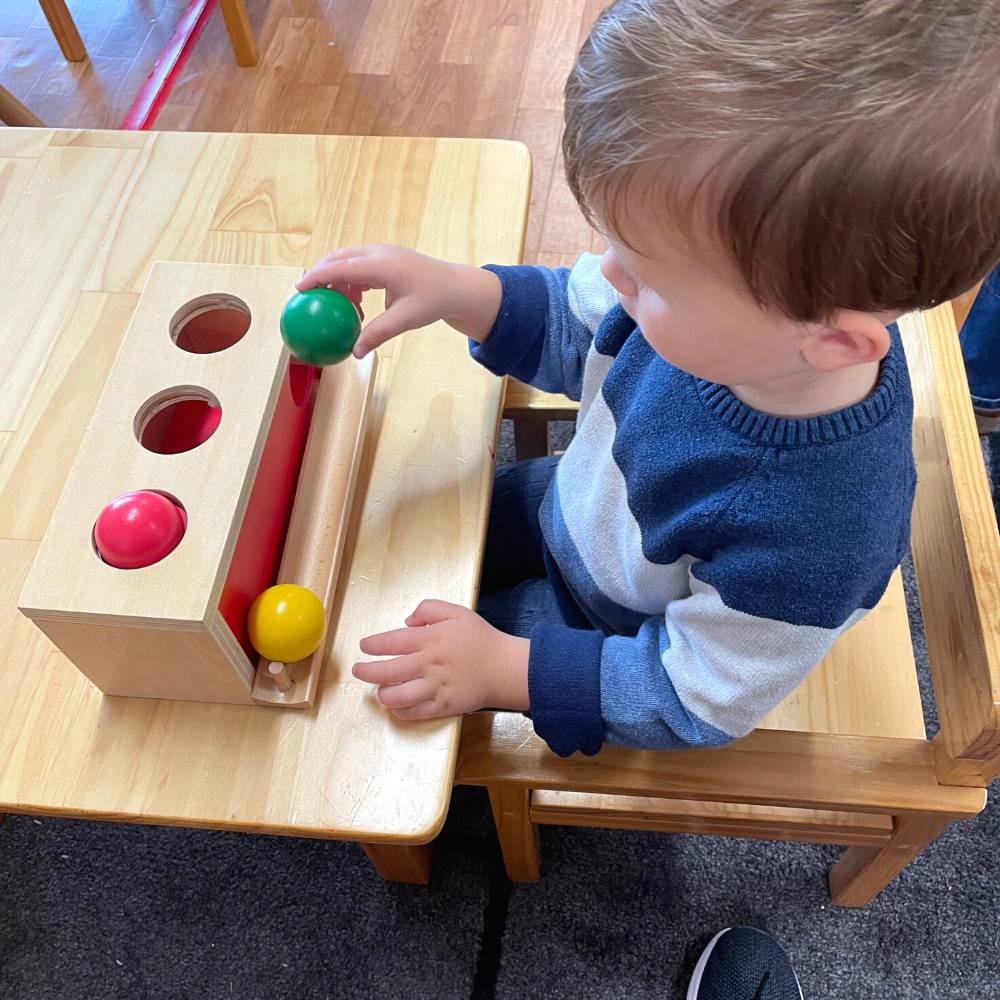
Fostering Independence
Independence - the golden word in Montessori philosophy. If you're curious about how a toy rotation system promotes independence and decision-making, you're not alone. It's about the magic that arises when there's an absence of overwhelming choices. Children engage more deeply, focus better, and make decisions more confidently.
This concept finds support in a fascinating study by Psychology Today, which proposes that toddlers exhibit greater focus, curiosity, and creativity when presented with fewer toys. Montessori toy rotation aligns seamlessly with this principle.
Trust me, it's true! Just the other day, I watched as my little one methodically chose a single toy from the 'rotation selection' and spent a good half hour deeply engrossed in play. It was a peaceful, proud parent moment – until the cat decided to join in and chaos ensued. Ah, the joys of parenthood!
Reducing Clutter
Finally, the part that will soothe every parent's heart – reducing clutter! Toy rotation not only aids your child's development but also keeps your living space more organized and peaceful. It's a win-win situation, offering a structured environment for your child and a clutter-free living space for you.
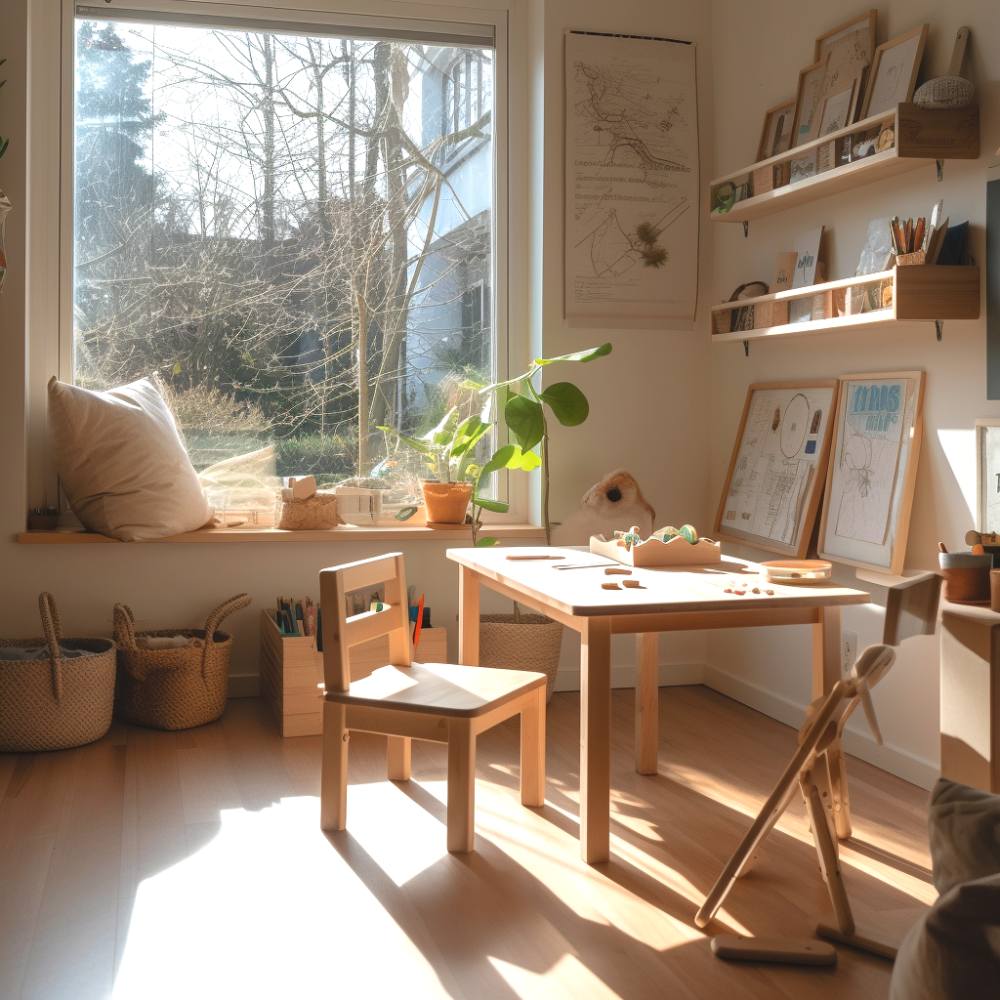
Curious about the ins and outs of Montessori toys? Dive into the wonderful world of Montessori toys and explore their benefits in my other articles. Up next, we'll journey into the practical realm of how to set up your very own toy rotation system, so stick around!
Step-by-Step Guide: How to Implement Montessori Toy Rotation at Home
While the thought of constantly rotating toys might seem a tad overwhelming initially, I assure you it's simpler than it sounds. And let's not forget, the benefits of Montessori toys and a well-orchestrated rotation system make it absolutely worth it!
So, let's dive into my expedition of setting up a toy rotation system, full of lessons learned, victories celebrated, and yes, some "facepalm" moments.
Deciding on Rotation Frequency
In the Montessori journey, it's crucial to determine how often to rotate toys. This decision is a delicate balance between novelty and familiarity, as we want to maintain interest without overwhelming our little ones. I suggest starting with a bi-weekly rotation for the younger ones (15-16 months), and adjusting as your child grows older and their interests evolve.
As your child matures and their concentration expands, you might find that the rotation frequency can extend to a month or more. Be observant, responsive, and flexible to their needs, even when you're away from home. The beauty of Montessori toys is their portability, making them great travel companions for continued learning on the go!
Key Points to Focus on:
- Start with a bi-weekly rotation for younger toddlers.
- Adjust the frequency based on your child's age, development, and response.
- Montessori toy rotation can extend to outside the home environment, making it adaptable and flexible for travel.
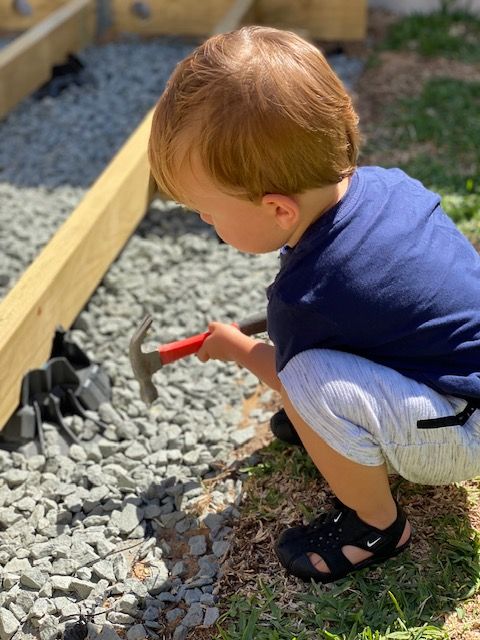
Selecting Toys for Rotation
Choosing the right toys for rotation can be critical (you parents out there, you know the cataclysm I'm talking about here). After all, not all toys are created equal!
Your Montessori toy organizer should include a variety of options that cater to your child's age, interests, and development stage. For instance, 13-month-olds might find soft toys and simple puzzles engaging, while 16-month-olds could be ready for more complex activities like stacking blocks or sorting shapes.
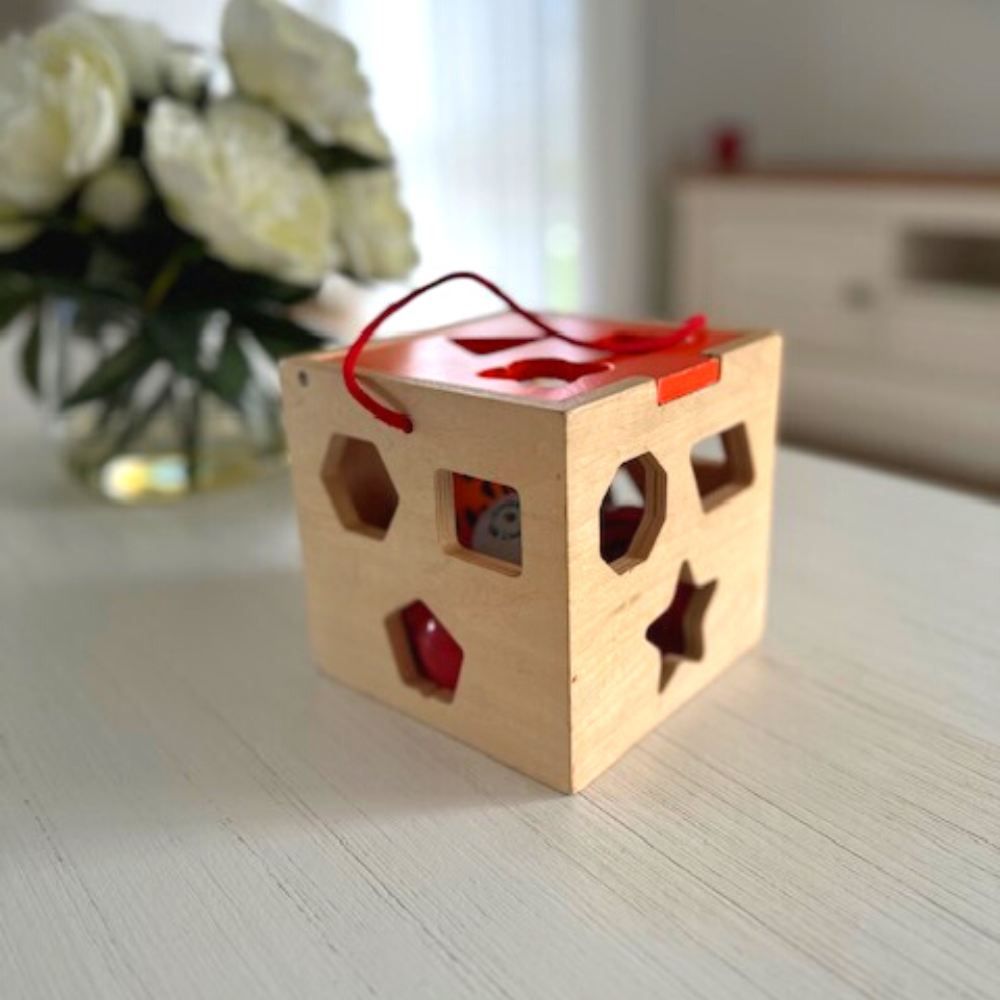
Remember, the environments away from home also matter. When traveling or visiting relatives, you can choose more portable and versatile toys to keep the learning going.
But what about the crowd favorites, the toys your child seems inseparable from? In my experience, they're the VIPs of your toy rotation storage - they get to stay in the lineup a little longer. And that's the beauty of the Montessori toy rotation - it's completely customizable to your child's preferences and needs.
Key Points to Focus on:
- Include a variety of age-appropriate and interest-based toys in the rotation.
- Montessori-based toys like wooden puzzles or counting beads are excellent options.
- Tailor the selection based on the environment, whether at home or away.
- Toys that your child loves can stay in the rotation longer.
Montessori Toy Rotation Storage Ideas
A crucial aspect of the Montessori toy rotation system is organization. After all, the goal is to reduce clutter, not add to it! This is where your Montessori toy organizer steps into the spotlight. When we first set up our system, we realized how pivotal it was to have a dedicated space for toy rotation storage.
It's beneficial to have a toy closet or a dedicated shelf for storing toys that are out of rotation. This way, you can easily manage what's in play and what's on hold. Having a 'busy toddler toy storage' can also keep those high-energy, attention-seeking toys out of sight when it's time for quieter activities.
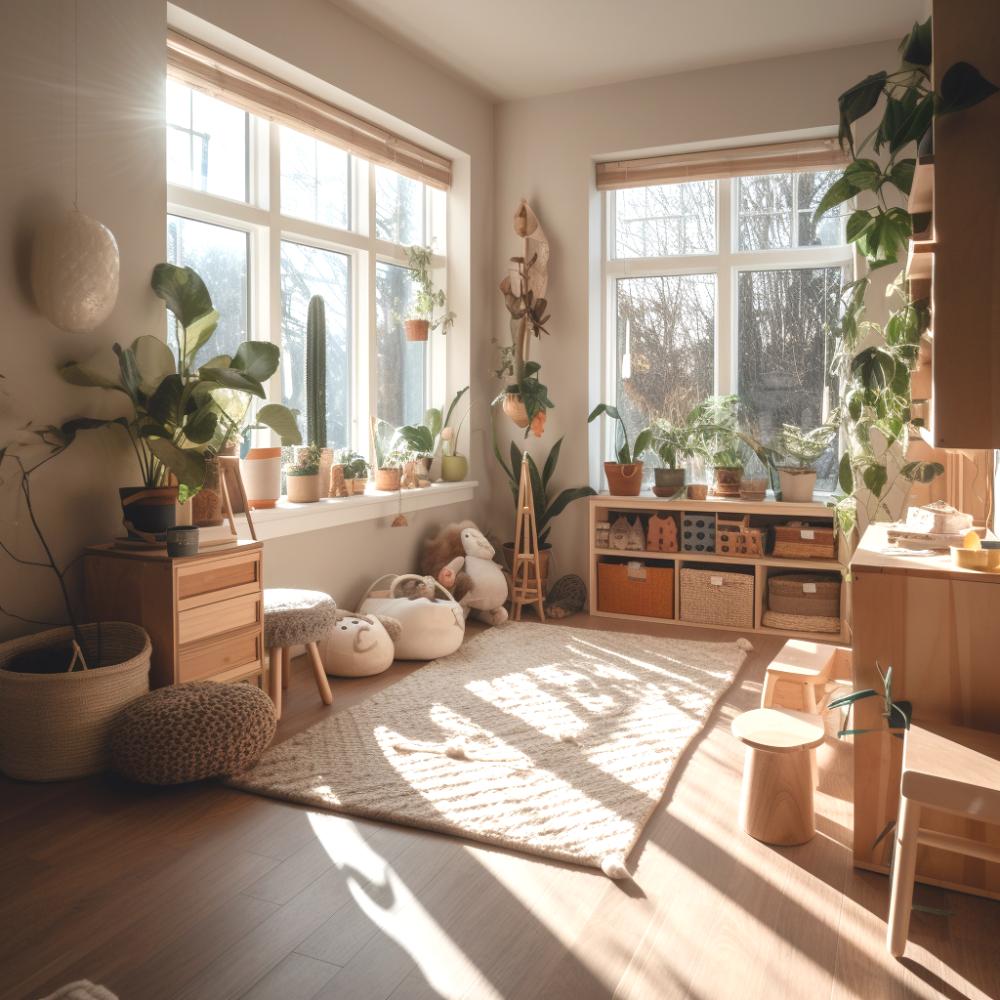
For a creative twist, you could also categorize the toys based on their type or the skills they encourage. For instance, you can have separate bins or shelves for 'Montessori toys for practical life skills,' 'sensorial toys,' 'language development toys,' etc. This organization helps keep track of the variety and balance in your child's play.
Key Points to Focus on:
- Have a dedicated space like a toy closet or shelves for toy rotation storage.
- Categorize toys based on type or the skills they promote.
- A 'busy toddler toy storage' can help manage high-energy playtimes.
Lessons Learned from Christian and Andreas (aka my little minions)
Introducing Montessori toy rotation to my sons, Christian and Andres, has been a journey filled with lots of learning (for them and me!). Here are a few lessons that we've gleaned along the way that I hope can help you out with your journey
Christian, being older, was initially a bit overwhelmed with the change. He had his favorites and wasn't too thrilled about them disappearing into the 'toy closet' (which he calls "doom temple"). However, we found that discussing the process with him, explaining the benefits, and involving him in selecting toys for the rotation helped him embrace the change.
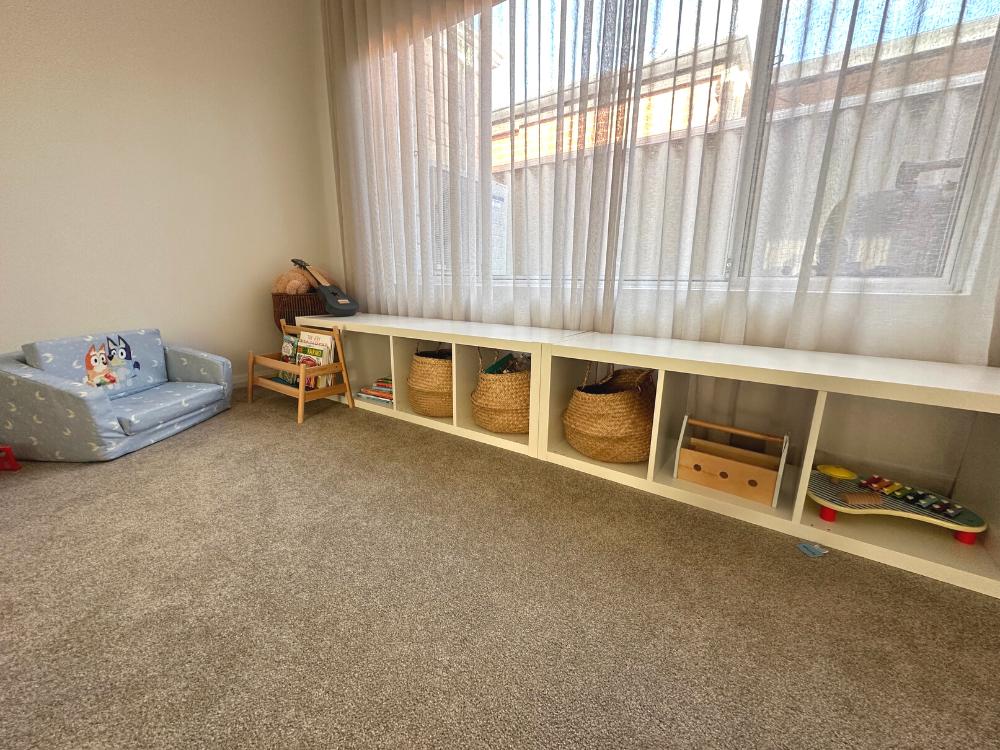
As for Andres, he was initially more receptive to the rotation, as the novelty factor worked in our favor. However, we noticed his attachment to certain toys. Rather than enforcing a strict rotation, we flexed the system to allow his beloved items to stay in rotation a bit longer.
From both experiences, it was clear that communication, flexibility, and patience played critical roles in implementing a successful toy rotation system at home.
Key Points to Focus on:
- Communication is key, especially with older children.
- Be flexible and allow for favorites to stay in rotation longer if needed.
- Patience is essential during the transition to a toy rotation system.
Troubleshooting Common Challenges in Toy Rotation
In our Montessori journey, we've danced around the playroom like graceful (and sometimes not-so-graceful) ballet dancers, and we've taken a deep dive into the benefits of Montessori toy rotation and have also explored a detailed step-by-step guide to implement it at home - you might be feeling ready to jump right in!
But, as with any dance, we occasionally stumble and need to find our footing again. Here are some potential challenges you might encounter while implementing your toy rotation system and my tried-and-tested strategies to conquer them. After all, what's a little toy chaos between friends?
Overwhelmed by the Toy Closet Chaos
When you first start toy rotation, your toy closet might look like a scene straight out of a toddler apocalypse movie. Stuffed animals strewn everywhere, building blocks creating mini obstacle courses, and puzzle pieces hiding in every nook and cranny – welcome to the world of 'montessori toy organization'. But remember to take a deep breath, my fellow Montessori parent, and get that trusty compass out to guide you!
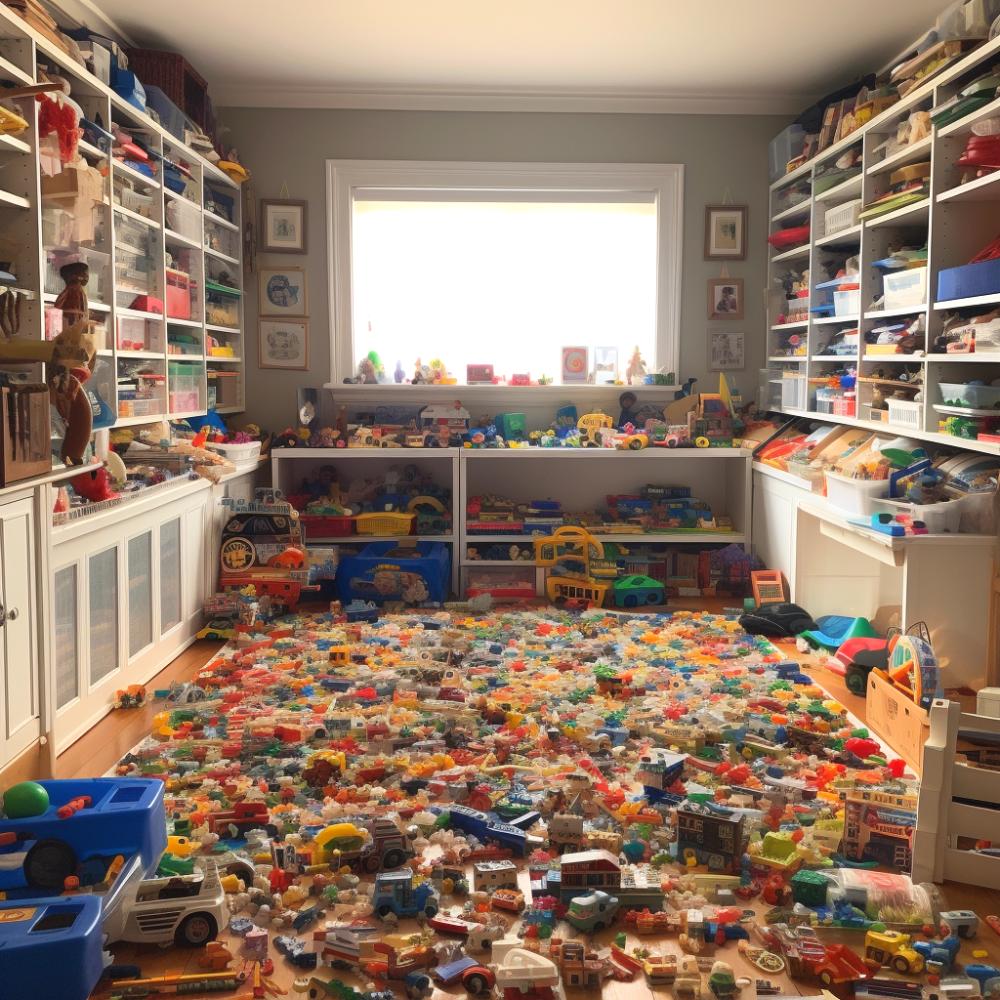
Remember, the key is to start small. Focus on one toy category at a time. Gradually declutter and organize, until you get your 'montessori toy storage' to look less like a tornado hit it and more like a peaceful play haven.
From personal experience, dividing toys into 'toy rotation categories' and storing them in labeled bins or baskets works wonders. But what works for me may not work for you, so experiment and find your unique 'toy rotation system' groove!
Key takeaways:
- Start small, focus on one toy category at a time.
- Declutter and organize gradually.
- Experiment with different storage methods to find what works best for you.
Struggling to Maintain the Rotation Schedule
Maintaining a consistent 'toy rotation' schedule can be daunting. Life happens - kids get sick, work gets busy, or maybe you're just exhausted from constantly stepping on rogue Lego pieces (ouch!). The key here is flexibility.
Toy rotation is not about strict rules, but about creating an engaging, stimulating environment for your child. So, if you miss a week, don't stress. Simply pick up where you left off when you're ready. And remember, it's all about progress, not perfection.
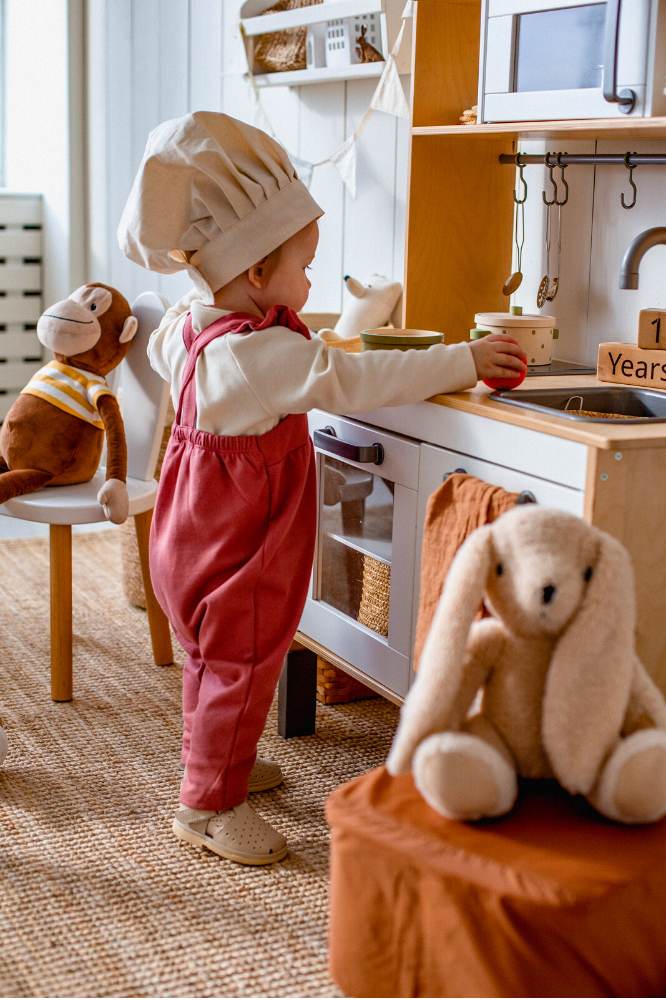
In my house, we've found that having a dedicated 'toy rotation' day in my schedule helps - and admittedly, my wife is a superstar at adhering to this. For me, Sunday afternoons are for toy rotation. Or if it falls during the week, my wife takes care of it. If you have someone with you, split up the workload and play as a team!
But, it's your dance, my friend. Find the rhythm that suits your family's schedule.
Key takeaways:
- Be flexible with your toy rotation schedule.
- Don't stress if you miss a week - just pick up where you left off.
- Try scheduling a specific day for toy rotation, and seek help if needed.
Child Resisting New Toys
When you introduce new toys in the rotation, your child might initially resist. This is normal! Change can be hard for little ones. But don't worry - patience and persistence are key here.
When my son, Christian, first resisted a new toy in the rotation, I was tempted to switch it out immediately. But I decided to wait and observe. It took a few days, but eventually, curiosity won, and he explored the new toy.
Remember, every child is different. Some might take to new toys instantly, while others might need a bit of time. Trust in their pace and their process.
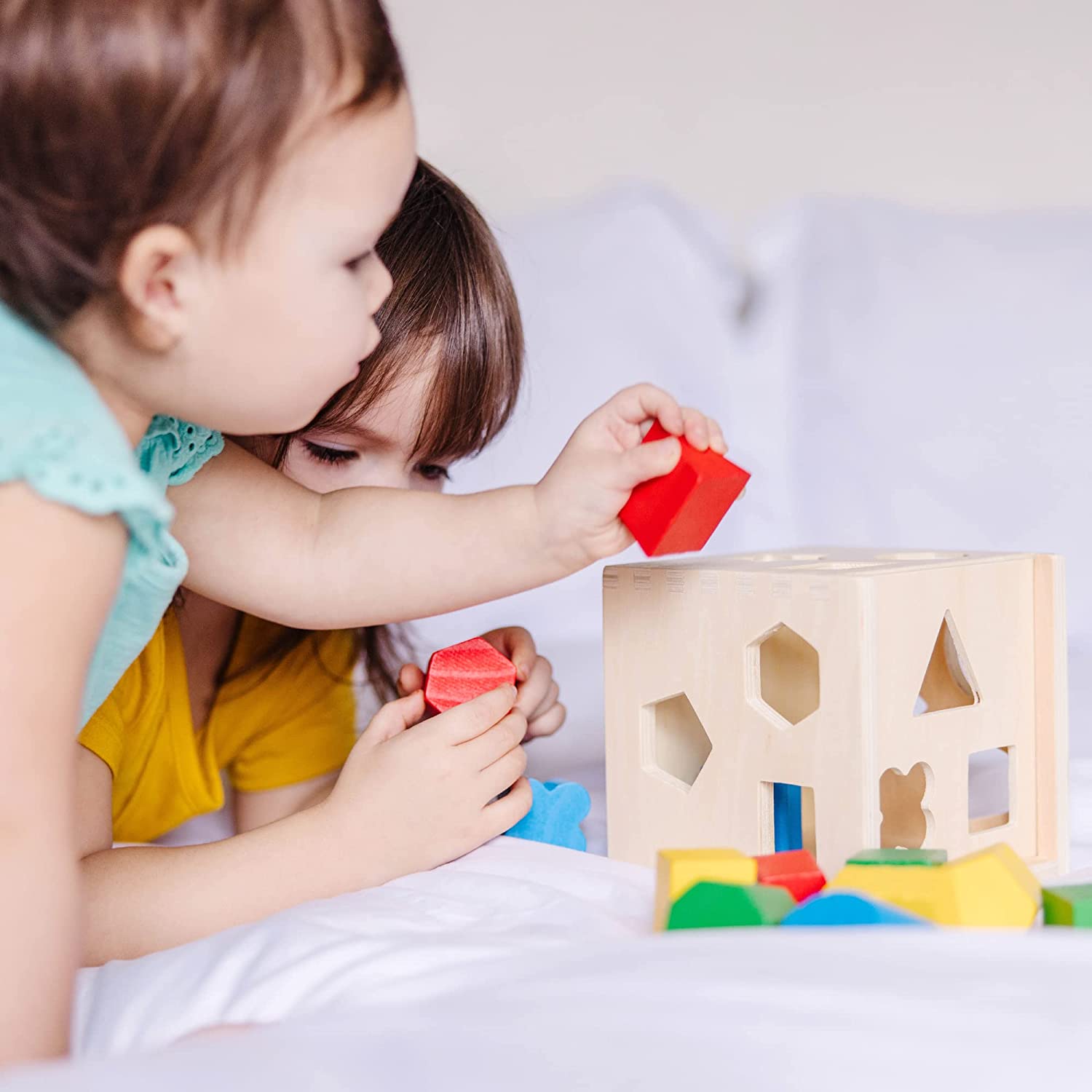
Key takeaways:
- Patience and persistence are key when introducing new toys.
- Resist the urge to switch out new toys immediately if your child initially ignores them.
- Trust in your child's pace and process.
Our Closing Thoughts
Well, my fellow Montessori enthusiasts, we've done it! We've journeyed together through the captivating world of Montessori toy rotation. From unveiling the science-backed benefits of this method, to navigating the practicalities of setting up your own toy rotation system at home, we've embraced each twist and turn of this engaging exploration. And, of course, we faced those pesky obstacles, demonstrating that no challenge is too big for a dedicated Montessori parent!
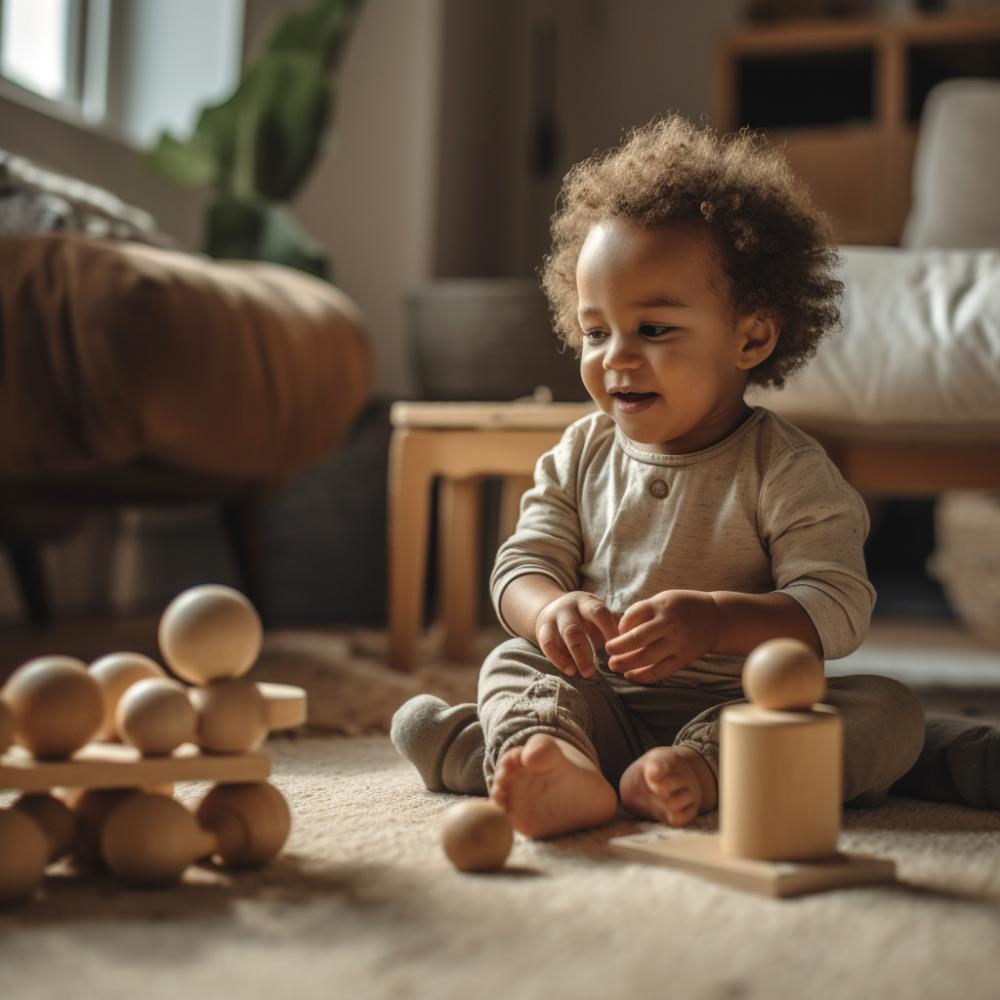
This journey, though filled with both giggles and a touch of organized chaos, has shown us the heart of the Montessori approach: nurturing our child's curiosity, fostering their developmental growth, and creating a peaceful home environment. But let's not forget - this is not simply about the process of rotation. At the heart of this all, it's about honoring our children's individual journeys, respecting their pace, and nurturing their love for learning.
As you stand on the brink of your own toy rotation adventure, remember: it's okay to feel overwhelmed, to question if you're doing it right, or to worry about your child's response. You are not alone. We're all in this together, riding this roller coaster of parenting, armed with love, patience, and a sprinkle of creativity.
In those moments, remember this guide, and the fact that you're doing an incredible job. Yes, there will be bumps along the way, but every bump is an opportunity for growth - for both you and your child. So, take a deep breath, and take in the joy of seeing your child explore, learn, and grow. Embrace the magic of these moments, because they are fleeting. Here's to creating countless enriching and beautiful experiences together!

References and Further Reading
To empower you further on this enlightening journey, I've compiled some insightful articles that you might find helpful. Whether you're after more information about the Montessori approach, or are eager to read some toy reviews, there's something for everyone.
Informative Articles:
Toy Reviews:



